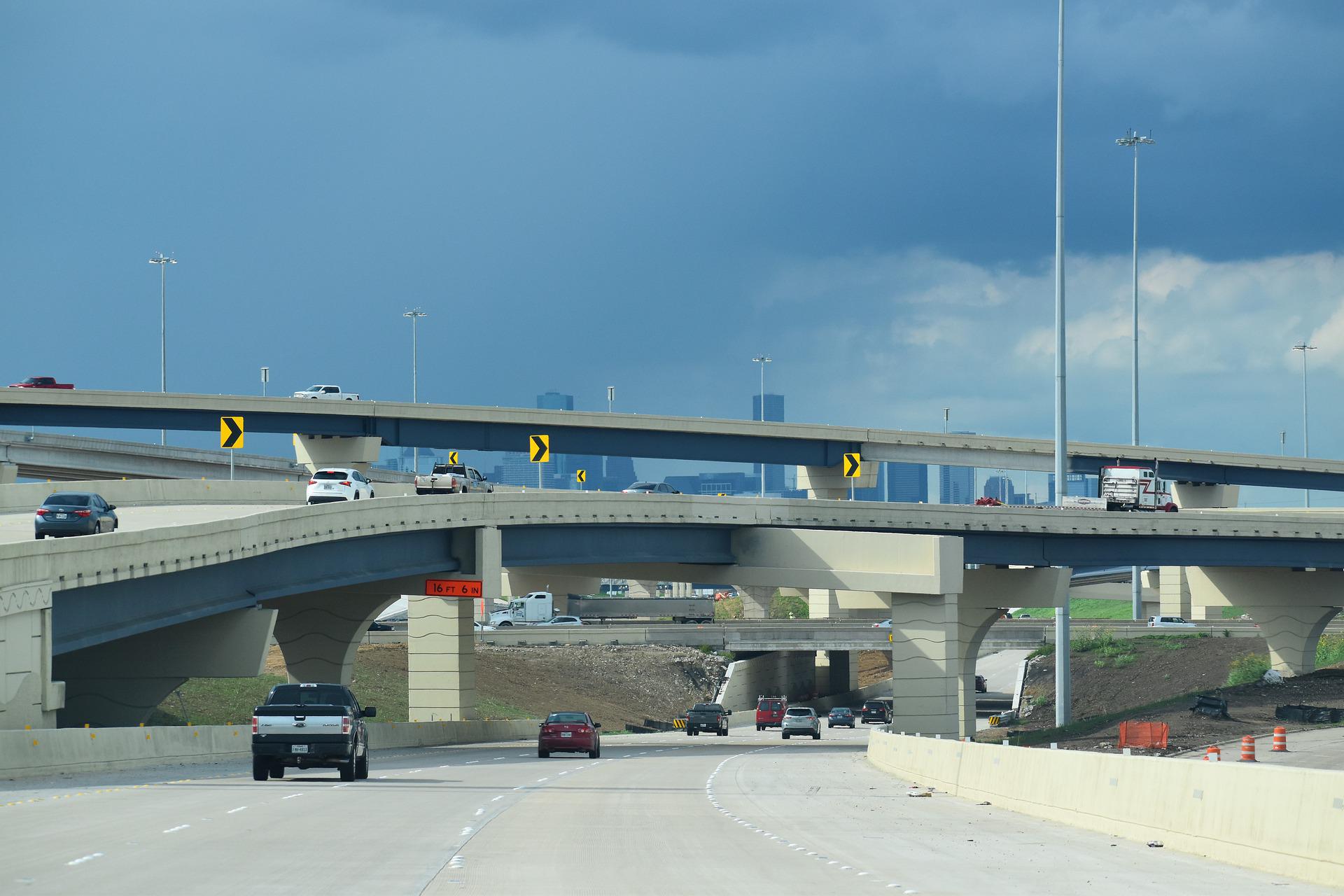Apply now to join our next cohort of Community Science Fellows and Community Leads!

Image by F. Muhammad from Pixabay
West Street Recovery works primarily with Black and Latinx low-income communities in Northeast Houston, Texas. Flooding is a persistent issue in the community compounded by multiple sources of environmental contaminants. There is an urgent need to show the cumulative impacts of flood risks, environmental contaminants, and disaster vulnerability on the health of the community through data visualizations and mapping of impacted areas. This data is critical for advancing West Street Recovery’s advocacy efforts in partnership with communities to increase drainage spending and flood protection of the community.
Over the last two decades Northeast Houston, Texas has experienced multiple disasters from tropical and winter storms and hurricanes including Allison (2001), Ike (2008), Tax Day (2015), Memorial Day (2016), Harvey (2017), Imelda (2019), and Winter Storm Uri (2020) (Blackburn, 2017). Due to the geographic location, irresponsible development practices, and poor drainage infrastructure in the area, flooding is a persistent hazard, particularly with climate change increasing the frequency and intensity of rainfall events (Zhang et al., 2018). In addition to disasters and flood risks, the community is also home to Texas’ largest cancer cluster and creosote deposit (Hirsch et al., 2021). Landfills, rail yards, hazardous facilities, and dozens of truck depots are located in the area (Hirsch et al., 2021). These environmental contaminants and flood risks compound and exacerbate the health risks of communities.
Black and Latinx low-income communities in the area experience the disproportionate risks and impacts of these environmental contaminants and floods. Despite the high proportion of floods and damages in these communities following Hurricane Harvey, 76% of the residents who requested assistance from FEMA were denied. Unequal response and recovery support, repeated disasters, and longstanding inequities rooted in racism, resulted in the community’s slow recovery and increased vulnerability to subsequent disasters.
Inequitable drainage infrastructure in the area also further exacerbates these risks. The majority of the area has an open ditch drainage system that is not managed by the city or county unlike closed drainage systems. The lack of upkeep and extreme rainfalls result in inadequate drainage of flood waters (Hirsch et al., 2021). The compounding risk of floods coupled with multiple environmental contaminants spreading in flood waters is a serious threat to the health of the community.

Figure 1. Low Life Expectancy in study area (EPA EJ Screen).

Figure 2. EPA superfund, toxic release, and brownfield sites located around study area
(Hirsch et al., 2021).

Figure 3. EPA EJ Screen EJ Index data for Harris County (Hirsch et al., 2021).
West Street Recovery was formed in response to Hurricane Harvey and has since focused on organizing for a just recovery and building community power and resilience to disasters in Northeast Houston. A lot of advocacy and organizing work has been done in collaboration with community members to advocate for increased drainage spending and improved flood protection for communities; however, no adequate action has been taken by policymakers.
To effectively advance these advocacy efforts, data is needed to show the cumulative impacts of flood risks, environmental contaminants, and disaster vulnerability on the health of the community. More specifically this project aims to analyze, visualize, and map flood, environmental justice, and health data for the following objectives:
This project will culminate in a report on the findings. Data visualizations and GIS story maps will also be produced and housed on a website. The goal is to share and effectively communicate this data with community members, partner organizations, and local and federal policymakers.
This data will provide critical evidence on the intersection of environmental justice, flood risks, disasters, and health as well as show which areas in Northeast Houston are most impacted. This is an important resource for advancing the community’s advocacy efforts for environmental justice at the federal level and for city and county level advocacy to increase drainage spending and investments needed for protecting the most impacted communities from flood risks. It also serves as a resource for other climate and environmental justice groups to reference and use for their advocacy efforts.
Blackburn, J. (2017). Living with Houston flooding. James A. Baker III Institute for
Public Policy. https://www.bakerinstitute.org/research/blackburn-hold. Accessed 14 September 2022.
Hirsch, B.L., Selle, B., Brown, D., Liu, A., Moses, Mal M., Awais, M., Tristan, M., Weston, A.,
Hurtado, H., Mundra, V., Villarreal, M. (2021). Survivors as Experts: A Community Evaluation of Disaster Recovery in Northeast Houston. Natural Hazards Center, University of Colorado Boulder.
Zhang, W., Villarini, G., Vecchi, G., Smith, J. (2018). Urbanization exacerbated the rainfall and
flooding caused by Hurricane Harvey in Houston. Nature, 563, 384–88.
https://doi.org/10.1038/s41586-018-0676-z.

Becky Selle (she/they) is West Street Recovery’s Co-Director of Organizing, Research, and Disaster Preparedness. She has worked with West Street since its founding and has helped to create the home repair program, create the disaster preparedness program, initiate community research efforts, and develop the Northeast Action Collective. Her focus is in developing our practice of inclusion, learning, community building, and popular education in all facets of project & organizational structure. Her background is in medical engineering, public health, and outdoor education.

Brenda Tijerina (she/they) started volunteering with West Street Recovery after Winter Storm Uri. She graduated from the University of Houston with a degree in Architecture, and currently works at the intersection of urban development and resilience planning. She also does organizing and advocacy work with the No Border Wall Coalition and Clean Air Laredo Coalition campaigns.
Ben Hirsch is West Street recovery’s Co-Director of Organizing, Research and Development. He has worked with WSR since its founding and has helped to launch the Harvey home repair program, found the Harvey Forgotten Survivors Caucus, and initiated community research efforts. He is a graduate of the LBJ school of Public Affairs where he studied the intersection of poverty and the environment and alternative forms of governance. He has done organizing work on environmental justice, and economic justice since participating in resistance to the G-20 Summit in Toronto, ON in 2009.

Jayajit Chakraborty is a Professor and Mellichamp Chair in Racial Environmental Justice at the Bren School of Environmental Science & Management at UC Santa Barbara. He has a Ph.D. in Geography and M.S. in Urban & Regional Planning, both from the University of Iowa. He is currently serving as a member of the US Environmental Protection Agency (EPA) Science Advisory Board, Work Group for Review of Science Supporting EPA Decisions, and the EPA Environmental Justice Science Committee. He is chairing the Scientific Review Panel for the EPA’s EJScreen Mapping & Screening Tool and is serving as a lead discussant/member of the EPA Environmental Justice Science & Analysis Review Panel. He also serves on a National Academies of Sciences Committee that provides recommendations regarding data and tools for meeting the goals of the White House Justice 40 Initiative, and the Health Effects Institute’s Environmental Justice Oversight Panel.
Professor Chakraborty’s research activities encompass a wide range of concerns related to the social dimensions of climate and environmental change, with an emphasis on environmental justice and community vulnerability to hazards and disasters. Other topics of interest include climate justice, disability justice, food security, and health equity. His scholarship has examined environmental and social inequalities at multiple geographic scales in the US, US-Mexico border, Australia, and India. His research utilizes a variety of methodologies, including applications of GIScience and spatial statistical techniques, as well as social surveys and mixed-methods approaches. He has published more than 120 articles/chapters and 4 books, including The Routledge Handbook of Environmental Justice and a chapter for the US Government’s Fifth National Climate Assessment (NCA5). His research has been funded by grants from the EPA, US National Science Foundation (NSF), US Department of Transportation, US Department of Treasury, American Association of Geographers, Australian Research Council, and many other agencies.

Hang Ngo (she/her) holds a Master of Public Health in Community-Oriented Public Health Practice from the University of Washington. She has worked with the Southern Institute of Social Sciences in Vietnam to conduct research on the climate, migration, and health nexus. Her research focuses on the intersection of climate, health, and justice. She is particularly interested in the health risks of and adaptation to climate change, including strategies for managing climate and disaster risks to reduce vulnerability and build community resilience.
(c) 2024 Thriving Earth Exchange